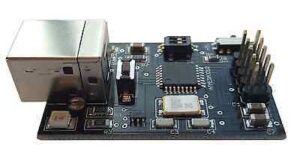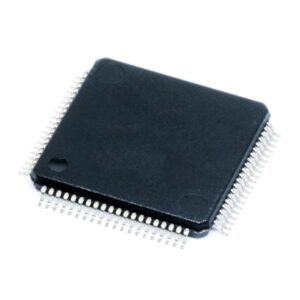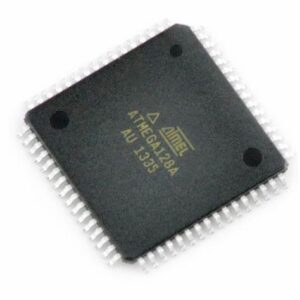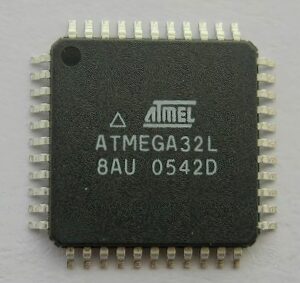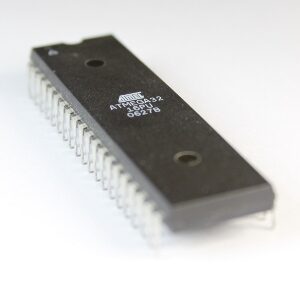Archive for the ‘Reverse Engineer Microcontroller’ Category
 Reverse Engineering STM32F205ZE Microcontroller Heximal Code
Reverse Engineering STM32F205ZE Microcontroller Heximal Code
Reverse Engineering STM32F205ZET6 Microcontroller Heximal Code and readout embedded heximal file from STM32F205ZET6 MCU flash memory, copy firmware to new Microprocessor stm32f205zet6;
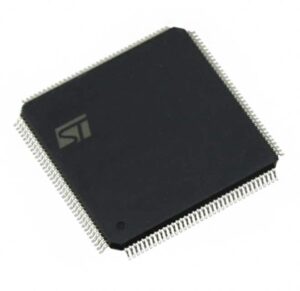
Reverse Engineering STM32F205ZET6 Microcontroller Heximal Code and readout embedded heximal file from STM32F205ZET6 MCU flash memory, copy firmware to new Microprocessor stm32f205zet6
The device remains in reset mode when VDD is below a specified threshold, VPOR/PDR or VBOR, without the need for an external reset circuit. On devices in WLCSP64+2 package, the BOR, POR and PDR features can be disabled by setting IRROFF pin to VDD. In this mode an external power supply supervisor is required (see Section 3.16).
The devices also feature an embedded programmable voltage detector (PVD) that monitors the VDD/VDDA power supply and compares it to the VPVD threshold. An interrupt can be generated when VDD/VDDA drops below the VPVD threshold and/or when VDD/VDDA is higher than the VPVD threshold. The interrupt service routine can then generate a warning message and/or put the MCU into a safe state. The PVD is enabled by software.
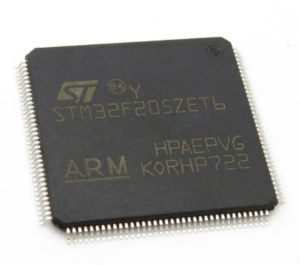
Código heximal del microcontrolador STM32F205ZET6 de ingeniería inversa y lectura del archivo heximal integrado de la memoria flash MCU STM32F205ZET6, copia del firmware al nuevo microprocesador stm32f205zet6
The regulator ON modes are activated by default on LQFP packages.On WLCSP64+2 package, they are activated by connecting both REGOFF and IRROFF pins to VSS, while only REGOFF must be connected to VSS on UFBGA176 package (IRROFF is not available).
VDD minimum value is 1.8 V.
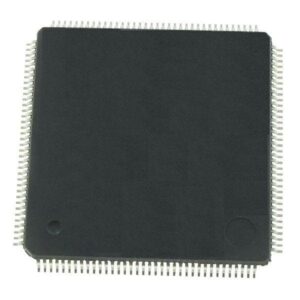
break arm controller stm32f205zet6 fuse bit and extract embedded heximal file from mcu chip’s flash memory
There are three power modes configured by software when the regulator is ON:
- MR is used in the nominal regulation mode
- LPR is used in Stop modes
The LP regulator mode is configured by software when entering Stop mode.
- Power-down is used in Standby
The Power-down mode is activated only when entering Standby mode. The regulator output is in high impedance and the kernel circuitry is powered down, inducing zero consumption. The contents of the registers and SRAM are lost).
Two external ceramic capacitors must be connected on VCAP_1 and VCAP_2 pin. Refer to
Figure 19: Power supply scheme and Table 16: VCAP1/VCAP2 operating conditions.
All packages have the regulator ON feature.
 Reverse Protected ATMEGA645 MCU Heximal
Reverse Protected ATMEGA645 MCU Heximal
Reverse Protected ATMEGA645 MCU Heximal is a process to readout chip atmega645 firmware from its flash and eeprom after attack locked microcontroller atmega645 protective system;
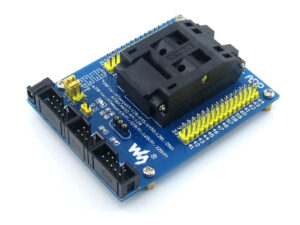
Reverse Protected ATMEGA645 MCU Heximal is a process to readout chip atmega645 firmware from its flash and eeprom after attack locked microcontroller atmega645 protective system
Atmel offers the QTouch® library for embedding capacitive touch buttons, sliders and wheels- functionality into AVR microcontrollers. The patented charge-transfer signal acquisition offersrobust sensing and includes fully debounced reporting of touch keys and includes Adjacent KeySuppression® (AKS™) technology for unambiguous detection of key events to copy chip atmega645 mcu file. The easy-to-use QTouch Suite toolchain allows you to explore, develop and debug your own touch applications.
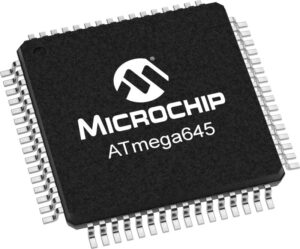
atmega645 mcu protegido inversamente heximal es un proceso para leer el firmware del chip atmega645 desde su flash y eeprom después de un ataque bloqueado sistema de protección del microcontrolador atmega645;
The device is manufactured using Atmel’s high density non-volatile memory technology. The On-chip In-System re-Programmable (ISP) Flash allows the program memory to be repro- grammed In-System through an SPI serial interface, by a conventional non-volatile memory programmer, or by an On-chip Boot program running on the AVR core. The Boot program can use any interface to download the application program in the Application Flash memory.
Software in the Boot Flash section will continue to run while the Application Flash section is updated, providing true Read-While-Write operation. By combining an 8-bit RISC CPU with In-System Self-Programmable Flash on a monolithic chip, the Atmel Atmel ATmega645 is a powerful microcontroller that provides a highly flexible and cost effective solution to many embedded control applications.
The Atmel ATmega325/3250/645/6450 is supported with a full suite of program and system development tools including: C Compilers, Macro Assemblers, Program Debugger/Simulators, In-Circuit Emulators, and Evaluation kits.
 Reverse Engineer DSP TMS320F28030PAG Microcontroller Flash Memory
Reverse Engineer DSP TMS320F28030PAG Microcontroller Flash Memory
Reverse Engineer DSP TMS320F28030PAG Microcontroller Flash Memory and restore dsp cpu tms320f28030pagt source code, copy flash program to new tms320f28030pag texas instrument dsp mcu;
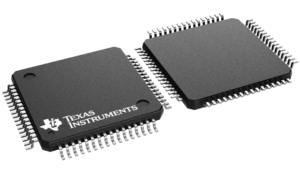
Reverse Engineer DSP TMS320F28030PAG Microcontroller Flash Memory and restore dsp cpu tms320f28030pagt source code, copy flash program to new tms320f28030pag texas instrument dsp mcu
Section 6.2.1 describes the signals. With the exception of the JTAG pins, the GPIO function is the default at reset, unless otherwise mentioned. The peripheral signals that are listed under them are alternate functions. Some peripheral functions may not be available in all devices. See Table 5-1 for details. Inputs are not 5-V tolerant. All GPIO pins are I/O/Z and have an internal pullup, which can be selectively enabled/disabled on a per-pin basis. This feature only applies to the GPIO pins. The pullups on the PWM pins are not enabled at reset. The pullups on other GPIO pins are enabled upon reset. The AIO pins do not have an internal pullup.
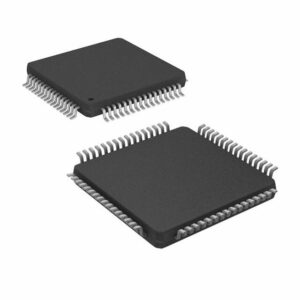
memoria flash del microcontrolador DSP TMS320F28030PAG de ingeniería inversa y restauración del código fuente dsp cpu tms320f28030pagt, copia del programa flash al nuevo instrumento tms320f28030pag texas dsp mcu;
When the on-chip VREG is used, the GPIO19, GPIO34, GPIO35, GPIO36, GPIO37, and GPIO38 pins could glitch during power up. This potential glitch will finish before the boot mode pins are read and will not affect boot behavior. If glitching is unacceptable in an application, 1.8 V could be supplied externally.
Alternatively, adding a current-limiting resistor (for example, 470 Ω) in series with these pins and any external driver could be considered to limit the potential for degradation to the pin and/or external circuitry. There is no power-sequencing requirement when using an external 1.8-V supply. However, if the 3.3-V transistors in the level-shifting output buffers of the I/O pins are powered before the 1.8-V transistors, it is possible for the output buffers to turn on, causing a glitch to occur on the pin during power up. To avoid this behavior, power the VDD pins before or with the VDDIO pins, ensuring that the VDD pins have reached 0.7 V before the VDDIO pins reach 0.7 V.
 Encrypted ATMEL ATMEGA128A MCU Flash Decoding
Encrypted ATMEL ATMEGA128A MCU Flash Decoding
Encrypted ATMEL ATMEGA128A MCU Flash Decoding will help engineer to copy atmega128a microcontroller flash heximal file out after readout atmega128a microprocessor’s content software from its flash and eeprom memory;
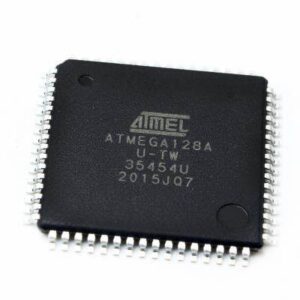
Encrypted ATMEL ATMEGA128A MCU Flash Decoding will help engineer to copy atmega128a microcontroller flash heximal file out after readout atmega128a microprocessor’s content software from its flash and eeprom memory
In this mode, the Watchdog Timer is always enabled, and the WDE bit will always read as one. A timed sequence is needed when changing the Watchdog Time-out period. To change the Watchdog Time-out, the following procedure must be followed:
- In the same operation, write a logical one to WDCE and WDE. Even though the WDE always is set, the WDE must be written to one to start the timed sequence
Within the next four clock cycles, in the same operation, write the WDP bits as desired, but with the WDCE bit cleared. The value written to the WDE bit is irrelevant to break atmega128a mcu fuse bit inside the flash memory.
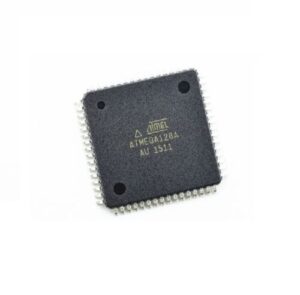
La decodificación flash MCU ATMEL ATMEGA128A cifrada ayudará al ingeniero a copiar el archivo heximal flash del microcontrolador atmega128a después de leer el software de contenido del microprocesador atmega128a de su memoria flash y eeprom
This section describes the specifics of the interrupt handling performed by the ATmega8. For a general explanation of the AVR interrupt handling, refer to “Reset and Interrupt Handling” on page 14.
Table 19 on page 47 shows reset and Interrupt Vectors placement for the various combinations of BOOTRST and IVSEL settings. If the program never enables an interrupt source, the Interrupt Vectors are not used, and regular program code can be placed at these locations. This is also the case if the Reset Vector is in the Application section while the Interrupt Vectors are in the boot section or vice versa to break atmega128a ic chip flash memory.
- When the BOOTRST Fuse is programmed, the device will jump to the Boot Loader address at reset, see “Boot Loader Support – Read-While-Write Self-Programming” on page 202
- When the IVSEL bit in GICR is set, Interrupt Vectors will be moved to the start of the boot Flash The address of each Interrupt Vector will then be the address in this table added to the start address of the boot Flash section;
- The Boot Reset Address is shown in Table 82 on page 213. For the BOOTRST Fuse “1” means unprogrammed while “0” means programmed
The most typical and general program setup for the Reset and Interrupt Vector Addresses in ATmega128A is:
| addressLabels | Code | Comments | ||
| $000 | rjmp | RESET | ; Reset Handler | |
| $001 | rjmp | EXT_INT0 | ; IRQ0 Handler | |
| $002 | rjmp | EXT_INT1 | ; IRQ1 Handler | |
| $003 | rjmp | TIM2_COMP | ; Timer2 Compare Handler | |
| $004 | rjmp | TIM2_OVF | ; Timer2 Overflow Handler | |
| $005 | rjmp | TIM1_CAPT | ; Timer1 Capture Handler | |
| $006 | rjmp | TIM1_COMPA | ; Timer1 CompareA Handler | |
| $007 | rjmp | TIM1_COMPB | ; Timer1 CompareB Handler | |
| $008 | rjmp | TIM1_OVF | ; Timer1 Overflow Handler | |
| $009 | rjmp | TIM0_OVF | ; Timer0 Overflow Handler | |
| $00a | rjmp | SPI_STC | ; SPI Transfer Complete Handler | |
| $00b | rjmp | USART_RXC | ; USART RX Complete Handler | |
| $00c | rjmp | USART_UDRE | ; UDR Empty Handler | |
| $00d | rjmp | USART_TXC | ; USART TX Complete Handler | |
| $00e | rjmp | ADC | ; ADC Conversion Complete Handler | |
| $00f | rjmp | EE_RDY | ; EEPROM Ready Handler | |
| $010 | rjmp | ANA_COMP | ; Analog Comparator Handler | |
| $011 | rjmp | TWSI | ; Two-wire Serial Interface Handler | |
| $012 | rjmp | SPM_RDY | ; Store Program Memory Ready Handler | |
| ; | ||||
| $013 | RESET: ldi | r16,high(RAMEND); Main program start | ||
| $014 | out | SPH,r16 ; Set Stack Pointer to top of RAM | ||
| $015 | ldi | r16,low(RAMEND) | ||
| $016 | out | SPL,r16 | ||
| $017 | sei | ; Enable interrupts | ||
| $018 | <instr> xxx | |||
| … | … | … | ||
 Reverse Engineer AVR Chip ATMEGA32L Microcontroller
Reverse Engineer AVR Chip ATMEGA32L Microcontroller
Reverse Engineer AVR Chip ATMEGA32L Microcontroller flash memory protection system is a process to crack mcu atmega32l flash memory fuse bit and readout heximal software from atmega32l mcu flash memory;
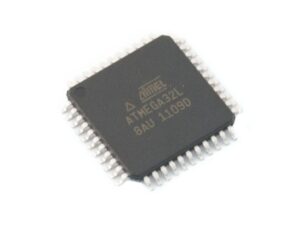
Reverse Engineer AVR Chip ATMEGA32L Microcontroller flash memory protection system is a process to crack mcu atmega32l flash memory fuse bit and readout heximal software from atmega32l mcu flash memory
XTAL1 and XTAL2 are input and output, respectively, of an inverting amplifier which can be con- figured for use as an On-chip Oscillator, as shown in Figure 11. Either a quartz crystal or a ceramic resonator may be used. The CKOPT Fuse selects between two different Oscillator amplifier modes.
When CKOPT is programmed, the Oscillator output will oscillate a full rail-to- rail swing on the output. This mode is suitable when operating in a very noisy environment or when the output from XTAL2 drives a second clock buffer to restore atmega32l mcu flash memory code. This mode has a wide frequency range. When CKOPT is unprogrammed, the Oscillator has a smaller output swing.
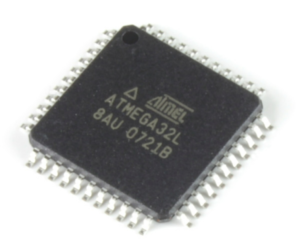
ingeniería inversa AVR chip ATMEGA32L microcontrolador sistema de protección de memoria flash es un proceso para romper mcu atmega32l memoria flash fusible bit y lectura de software heximal de atmega32l mcu memoria flash;
This reduces power consumption considerably. This mode has a limited frequency range and it cannot be used to drive other clock buffers. For resonators, the maximum frequency is 8MHz with CKOPT unprogrammed and 16MHz with CKOPT programmed. C1 and C2 should always be equal for both crystals and resonators.
The optimal value of the capacitors depends on the crystal or resonator in use, the amount of stray capacitance, and the electromagnetic noise of the environment to break atmega32l mcu encryption fuse bit. Some initial guidelines for choosing capacitors for use with crystals are given in Table 4. For ceramic resonators, the capacitor values given by the manufacturer should be used.
 Reverse ATMEL AVR MCU ATmega32A Heximal Code
Reverse ATMEL AVR MCU ATmega32A Heximal Code
Reverse ATMEL AVR MCU ATmega32A Heximal Code is a process to unlock atmega32a locked microcontroller fuse bit and read embedded firmware out from atmega32a avr chip flash memory;
The AVR Stack Pointer is implemented as two 8-bit registers in the I/O space. The number of bits actually used is implementation dependent. Note that the data space in some implementations of the AVR architecture is so small that only SPL is needed. In this case, the SPH Register will not be present.
This section describes the general access timing concepts for instruction execution. The Atmel®AVR® CPU is driven by the CPU clock clkCPU, directly generated from the selected clock source for the chip. No internal clock division is used.
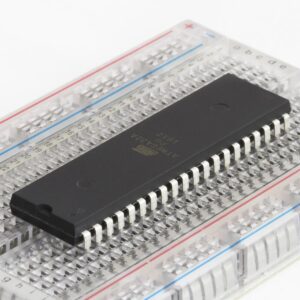
revertir ATMEL AVR MCU ATmega32A código heximal es un proceso para desbloquear atmega32a microcontrolador bloqueado bit fusible y leer el firmware embebido a cabo a partir de atmega32a avr chip de memoria flash
Figure 5 shows the parallel instruction fetches and instruction executions enabled by the Harvard architecture and the fast-access Register File concept. This is the basic pipe-lining concept to obtain up to 1 MIPS per MHz with the corresponding unique results for functions per cost, functions per clocks, and functions per power-unit to copy avr mcu atmega32a software.
Figure 6 shows the internal timing concept for the Register File. In a single clock cycle an ALU operation using two register operands is executed, and the result is stored back to the destination register.
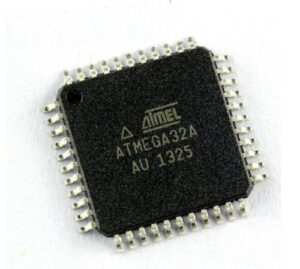
Reverse ATMEL AVR MCU ATmega32A Heximal Code is a process to unlock atmega32a locked microcontroller fuse bit and read embedded firmware out from atmega32a avr chip flash memory
The Atmel®AVR® provides several different interrupt sources. These interrupts and the separate Reset Vector each have a separate Program Vector in the Program memory space. All interrupts are assigned individual enable bits which must be written logic one together with the Global Interrupt Enable bit in the Status Register in order to enable the interrupt by breaking of avr microcontroller atmega32a protection fuse bit.
Depending on the Program Counter value, interrupts may be automatically disabled when Boot Lock Bits BLB02 or BLB12 are programmed. This feature improves software security. See the section “Memory Programming” on page 215 for details.
 Crack Secured Microcontroller PIC12LF1612 Protection
Crack Secured Microcontroller PIC12LF1612 Protection
Crack Secured Microcontroller PIC12LF1612 Protection and extract embedded binary file from PIC12F617 MCU;
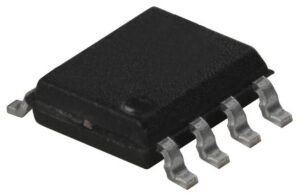
Crack Secured Microcontroller PIC12LF1612 Proteção e extração de arquivo binário embutido do PIC12F617 MCU
Because the OSCCON register is cleared on Reset events, the INTOSC (or postscaler) clock source is not initially available after a Reset event; the INTRC clock is used directly at its base frequency. To use a higher clock speed on wake-up, the INTOSC or postscaler clock sources can be selected to provide a higher clock speed by setting bits, IFRC2:IFRC0, immediately after Reset. For wake-ups from Sleep, the INTOSC or post- scaler clock sources can be selected by setting IFRC2:IFRC0 prior to entering Sleep mode.
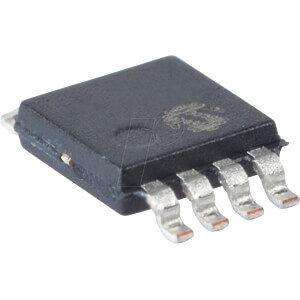
Взлом защищенного микроконтроллера PIC12LF1612 Защита и извлечение встроенного бинарного файла из микроконтроллера PIC12F617
In all other power managed modes, Two-Speed Start-up is not used. The device will be clocked by the currently selected clock source until the primary clock source becomes available. The setting of the IESO bit is ignored to unlock microchip pic12f615 flash memory.
While using the INTRC oscillator in Two-Speed Start- up, the device still obeys the normal command sequences for entering power managed modes, including serial SLEEP instructions (refer to Section 3.1.3 “Multiple Sleep Commands”). In practice, this means that user code can change the SCS1:SCS0 bit settings and issue SLEEP commands before the OST times out.
 Microchip PIC12F609 Processor Flash Binary Duplication
Microchip PIC12F609 Processor Flash Binary Duplication
Microchip PIC12F609 Processor Flash Binary Duplication can help engineer to unlock microcontroller pic12f609 heximal, and copy embedded firmware to new microprocessor pic12f609;
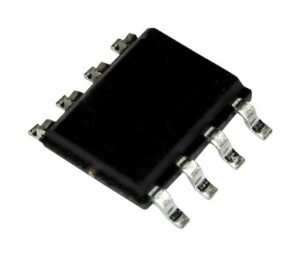
La duplicación binaria flash del procesador PIC12F609 de Microchip puede ayudar al ingeniero a desbloquear el microcontrolador pic12f609 heximal y copiar el firmware incorporado al nuevo microprocesador pic12f609
Depending on the power source for the device voltage, the voltage normally decreases relatively slowly. This means that the LVD module does not need to be constantly operating when breaking off pic12f615 mcu software. To decrease the current require- ments, the LVD circuitry only needs to be enabled for short periods, where the voltage is checked. After doing the check, the LVD module may be disabled.
Each time that the LVD module is enabled, the circuitry requires some time to stabilize. After the circuitry has stabilized, all status flags may be cleared in the process of breaking pic12f609 ic chip flash memory. The module will then indicate the proper state of the system.
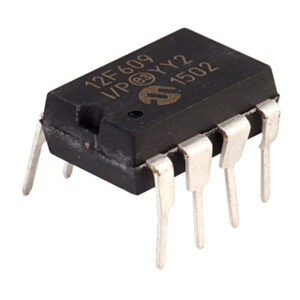
Ataque el microcontrolador PIC12F609 bloqueado y deshabilite el bit de fusible de seguridad, restaure el archivo heximal en la memoria flash MCU PIC12F609;
The following steps are needed to set up the LVD module:
- Write the value to the LVDL3:LVDL0 bits (LVDCON register), which selects the desired LVD trip
- Ensure that LVD interrupts are disabled (the LVDIE bit is cleared or the GIE bit is cleared).
- Enable the LVD module (set the LVDEN bit in the LVDCON register).
- Wait for the LVD module to stabilize (the IRVST bit to become set).
- Clear the LVD interrupt flag, which may have falsely become set, until the LVD module has stabilized (clear the LVDIF bit).
- Enable the LVD interrupt (set the LVDIE and the GIE bits).
 Reverse DSP MCU TMS320F28062PZT Flash Firmware
Reverse DSP MCU TMS320F28062PZT Flash Firmware
Reverse DSP MCU TMS320F28062PZT Flash Firmware is a process to unlock dsp microcontroller tms320f28062 encryption over its flash memory, and then the binary code will be readout from microprocessor tms320f28062pzt flash memory;
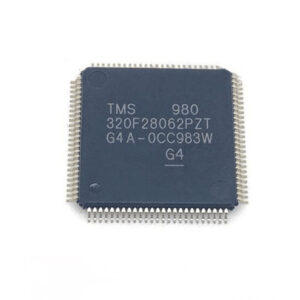
Reverse DSP MCU TMS320F28062PZT Flash Firmware is a process to unlock dsp microcontroller tms320f28062 encryption over its flash memory, and then the binary code will be readout from microprocessor tms320f28062pzt flash memory
The peripheral – I/O multiplexing implemented in the device prevents all available peripherals from being used at the same time. This is because more than one peripheral function may share an I/O pin. It is, however, possible to turn on the clocks to all the peripherals at the same time, although such a configuration is not useful. If this is done, the current drawn by the device will be more than the numbers specified in the current consumption tables.
The 2803x devices incorporate a method to reduce the device current consumption. Because each peripheral unit has an individual clock-enable bit, significant reduction in current consumption can be achieved by turning off the clock to any peripheral module that is not used in a given application. Furthermore, any one of the three low-power modes could be taken advantage of to reduce the current consumption even further. Table 7-1 indicates the typical reduction in current consumption achieved by turning off the clocks.
All peripheral clocks (except CPU Timer clock) are disabled upon reset. Writing to/reading from peripheral registers is possible only after the peripheral clocks are turned; This number represents the current drawn by the digital portion of the ADC module. Turning off the clock to the ADC module results in the elimination of the current drawn by the analog portion of the ADC (IDDA) as well.
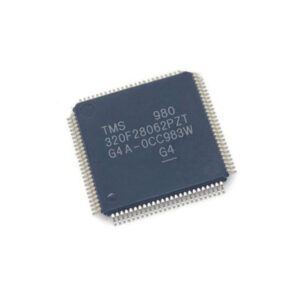
Обратное прошивка DSP MCU TMS320F28062PZT Flash — это процесс разблокировки шифрования микроконтроллера tms320f28062 dsp через его флэш-память, после чего двоичный код будет считан из флэш-памяти микропроцессора tms320f28062pzt.
For peripherals with multiple instances, the current quoted is per For example, the 2 mA value quoted for ePWM is for one ePWM module.The baseline IDD current (current when the core is executing a dummy loop with no peripherals enabled) is 40 mA, typical. To arrive at the IDD current for a given application, the current-drawn by the peripherals (enabled by that application) must be added to the baseline IDD current.
 Reverse Engineering PIC18F24K40T Microcontroller Heximal Data
Reverse Engineering PIC18F24K40T Microcontroller Heximal Data
Reverse Engineering PIC18F24K40T Microcontroller Heximal Data is a process to crack pic18f24k40t mcu security fuse bit, and then readout secured code from microprocessor pic18f24k40t flash memory;
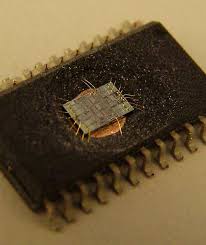
The PIC18F24K40T devices contain circuitry to prevent clocking “glitches” when switching between clock sources. A short pause in the system clock occurs during the clock switch.
The length of this pause is between eight and nine clock periods of the new clock source. This ensures that the new clock source is stable and that its pulse width will not be less than the shortest pulse width of the two clock sources.
When the device executes a SLEEP instruction, the system is switched to one of the power managed modes, depending on the state of the IDLEN and SCS1:SCS0 bits of the OSCCON register when recover microcontroller pic18f24k20 flash program and eeprom data.
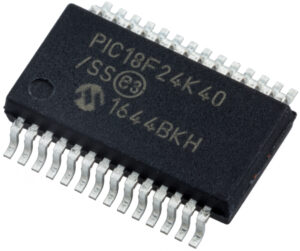
ingeniería inversa PIC18F24K40T microcontrolador de datos heximales es un proceso para romper pic18f24k40t mcu fusible de seguridad de bits, y luego leer el código de seguridad del microprocesador pic18f24k40t memoria flash
When PRI_IDLE mode is selected, the designated primary oscillator continues to run without interruption. For all other power managed modes, the oscillator using the OSC1 pin is disabled. The OSC1 pin (and OSC2 pin, if used by the oscillator) will stop oscillating.
In Secondary Clock modes (SEC_RUN and SEC_I- DLE), the Timer1 oscillator is operating and providing the system clock in the process of pic18f24k22 mcu locked code recovery. The Timer1 oscillator may also run in all power managed modes if required to clock Timer1 or Timer3.
